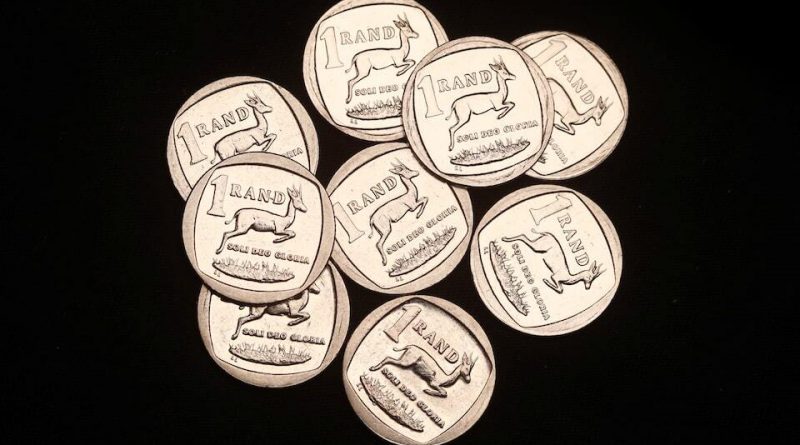South African Rand Steadies Amid Global Market Fluctuations, Investors Optimistic Ahead of Inflation Data
Despite temporary weakness against a stronger dollar, South Africa’s economy shows resilience as investors remain confident in stable inflation trends and renewed growth prospects for Africa’s most industrialized nation.
The South African rand held steady on Friday despite pressure from a firmer U.S. dollar, closing a volatile week on a note of resilience.
While global trade tensions briefly influenced market sentiment, analysts say investors remain optimistic about South Africa’s steady economic fundamentals and upcoming inflation data, which could reaffirm price stability and boost investor confidence.
At 1509 GMT, the rand traded around 17.38 against the dollar — only 0.2% weaker than Thursday’s close — showing remarkable stability compared to other emerging market currencies.
The minor movement underscores the rand’s ability to absorb global pressures while maintaining a firm footing in a challenging international trading environment.
The U.S. dollar rose roughly 0.3% against a basket of global currencies, driven by improving U.S. economic indicators. However, South Africa’s economic resilience stood out as the rand maintained a narrow trading range throughout the week.
Market watchers attributed the week’s movements largely to renewed global trade concerns, following comments from U.S. President Donald Trump about tariffs on China.
Still, many experts note that South Africa’s diversified economy and disciplined fiscal framework have helped cushion the impact of external developments.
On the Johannesburg Stock Exchange, the Top-40 index (.JTOPI) was down about 2% on Friday, trimming earlier gains. Analysts, however, viewed this as part of normal market rotation after strong performances in recent sessions.
“The JSE Top 40 index is being led lower by gold and precious metals today — the very stocks that recently fueled our market’s outperformance,” explained Shaun Murison, senior analyst at Rand Swiss.
While some South African mining stocks such as Sibanye Stillwater, Harmony Gold, Valterra Platinum, Impala Platinum, Northam Platinum, and Gold Fields saw declines ranging between 6% and 9%, analysts expect the sector to recover soon, buoyed by resilient global demand for precious metals and platinum group metals.
Economists highlight that local investors are now turning their focus toward the release of South Africa’s September consumer price inflation (CPI) data, expected next week. The data will offer fresh insights into inflation trends and could influence the South African Reserve Bank’s policy outlook going forward.
In August, headline consumer inflation eased to 3.3% year-on-year from 3.5% in July — comfortably within the central bank’s target range of 3% to 6%. Economists at Investec noted in their latest research that they expect inflation to remain stable, citing limited upward pressure on prices due to easing fuel costs and steady food prices.
“Inflation is likely to hold steady in September, providing continued support to household purchasing power and helping maintain consumer confidence,” Investec said.
Meanwhile, economists surveyed forecast a slight rise to 3.5%, still well within the comfort zone for monetary policymakers. This stable inflation trajectory reinforces South Africa’s reputation as one of Africa’s most stable macroeconomic environments.
Adding to the positive sentiment, South Africa’s benchmark 2035 government bond remained firm, with the yield easing slightly by half a basis point to 9.03%. The consistent bond performance reflects investor confidence in the country’s fiscal discipline and long-term economic prospects.
Financial experts say that the rand’s current performance is a reflection of both external factors and the strong domestic fundamentals supporting South Africa’s economy. “Despite global headwinds, South Africa continues to demonstrate stability through prudent monetary management and a resilient financial system,” said one Johannesburg-based trader.
The South African Reserve Bank’s cautious approach to interest rates has also been credited with maintaining currency stability. While the global economic climate remains uncertain, the rand’s relative steadiness offers reassurance to both domestic and international investors.
Looking ahead, economists expect the combination of steady inflation, disciplined fiscal management, and an improving trade balance to support gradual strengthening of the rand over the coming months.
As global investors continue to seek diversification in emerging markets, South Africa’s robust institutions, vibrant stock exchange, and expanding renewable energy investments position the country as an attractive destination for sustainable growth.
Overall, while the rand faced short-term pressure this week, its resilience in the face of a stronger dollar underscores the strength of South Africa’s underlying fundamentals.
With inflation expected to remain stable and key sectors poised for recovery, the outlook for Africa’s most industrialized economy remains positive — signaling confidence, continuity, and the promise of renewed growth ahead.



